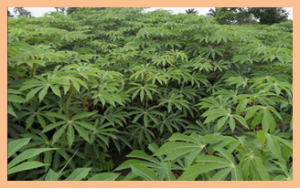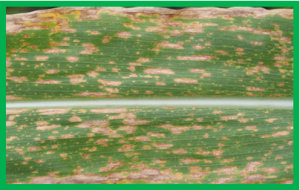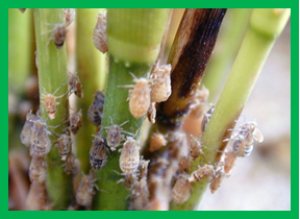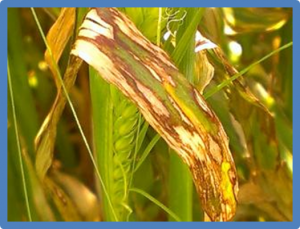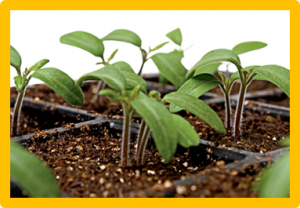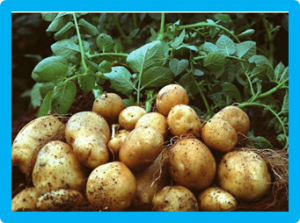Cassava (Manihot esculenta Crantz) is the predominant staple food in Sub-Saharan African (SSA) and an industrial crop in South East Asia. Despite focused breeding efforts for increased yield, resistance and nutritional value, cassava breeding has not advanced at the same rapidity as other staple crops. In the present study, metabolomic techniques were developed and implemented to characterize the chemotypes of selected cassava accessions and assess potential resources for the breeding program.
Soybean is a globally important oil seed crop. Both the high protein and oil content of soybean seeds make this crop a lucrative commodity. As in higher eukaryotic species with available genomes, the functional annotation of most of soybean's genes still remains to be investigated. A major hurdle in the functional genomics of soybean is a rapid method to test gene constructs before embarking on stable transformation experiments.
A toxic activity was identified from the culture filtrate (CF) of the fungus Cochliobolus heterostrophus, causal agent of the maize disease southern leaf blight (SLB) with differential toxicity on maize lines. Two independent mapping populations; a 113-line recombinant inbred line population and a 258-line association population, were used to map loci associated with sensitivity to the CF at the seedling stage. A major QTL on chromosome 4 was identified at the same locus using both populations.
The use of pesticides in rice can not only manage the pest but also influence non-target organisms. The rove beetle (Paederus fuscipes), which is an important predator of the brown plant hopper (Nilaparvata lugens) in rice ecosystems, was tested to investigate acute and chronic effects of emamectin benzoate. The results from this study show that the LC50 of emamectin benzoate to adults of P. fuscipes at 72 h was 3.07 (1.84-4.54) mg a.i. L-1, whereas the LC50 of emamectin benzoate to the second instar larvae of P. fuscipes at 72 h was 2.58 (1.95-3.19) mg a.i. L-1.
A population (NJRIKY) composed of 427 recombinant inbred lines (RILs) derived from Kefeng-1 × NN1138-2 (MGII × MGV, MG maturity group) was applied for detecting flowering date (R1) quantitative trait locus (QTL) system in soybean. From a low-depth re-sequencing (~ 0.75 ×), 576,874 SNPs were detected and organized into 4737 BINs (recombination breakpoint determinations) and 3683 SNP linkage disequilibrium blocks (SNPLDBs), respectively. Using the association mapping procedures “Restricted Two-stage Multi-locus Genome-wide Association Study” (RTM-GWAS),
The transgenic tobacco cells showed reduced mortality and efficient cycling under salt stress adaptation. This was accompanied by reduced sensitivity to Methyl jasmonate and increased responsiveness to auxin. In the case of transgenic rice, the steady-state levels of OsJAZ8 transcripts were more efficiently induced under salt stress compared to the wild type, this induction was more pronounced in the dominant-negative OsJAZ8 variant.
Spinach downy mildew is a globally devastating oomycete disease. The use of downy mildew resistance genes constitutes the most effective approach for disease management. Hence, the objective of the present study was to fine map the first-reported resistance locus RPF1. The resistance allele at this resistance locus was effective against races 1–7, 9, 11, 13, and 15 of Peronospora farinosa f. sp. spinaciae (P. effusa). The approach fine mapped RPF1 using specific-locus amplified fragment sequencing (SLAF-Seq) technology combined with bulked segregant analysis.
Rhynchosporium commune is a fungal pathogen of barley which causes a highly destructive and economically important disease known as rhynchosporium. Genome-wide association mapping was used to investigate the genetic control of host resistance to R. commune in a collection of predominantly European spring barley accessions. Multi-year disease nursery field trials revealed 8 significant resistance quantitative trait loci (QTL), whilst a separate association mapping analysis using historical data from UK national and recommended list trials identified 9 significant associations.
In vascular (Arabidopsis thaliana) and nonvascular (Physcomitrella patens) plants, PHOSPHATE 1 (PHO1) homologs play important roles in the acquisition and transfer of phosphate. The tomato genome contains six genes (SlPHO1;1-SlPHO1;6) homologous to AtPHO1. The six proteins have typical characteristics of the plant PHO1 family, such as the three SPX sub domains in the N-terminal portion and one EXS domain in the C-terminal portion.
We analyzed a segregating monoparental dihaploid potato population comprising 215 genotypes derived from a tetraploid variety that is highly resistant to Synchytrium endobioticum pathotypes 18 and 6. The clear bimodal segregation for both pathotypes indicated that a major dominant resistance factor in a simplex allele configuration was present in the tetraploid donor genotype. Compared to that in previous analyses of the same tetraploid donor in conventional crosses with susceptible tetraploid genotypes,


 Curently online :
Curently online :
 Total visitors :
Total visitors :
